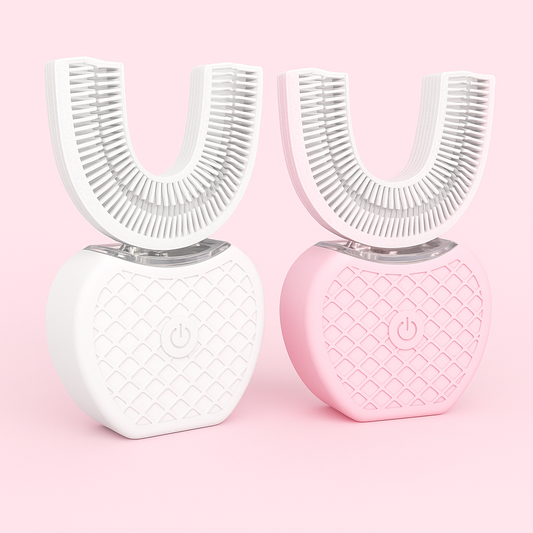Introduction
In 2025, the landscape of oral health care continues to evolve rapidly, driven by new scientific insights and consumer preferences for natural and effective products. Two ingredients that have gained significant attention are fluoride and xylitol. These components have become central to toothpaste formulations, each offering unique benefits for maintaining healthy teeth and gums. Whether you prioritize cavity prevention, natural ingredients, or gentle care, understanding the distinctions between fluoride and xylitol toothpaste is essential for making an informed choice that supports your oral health goals.
What is Fluoride and How Does It Work?
Fluoride is a naturally occurring mineral found in water, soil, plants, and various foods. It has been a cornerstone of dental care since the mid-20th century, primarily due to its ability to protect teeth against decay. When applied topically through toothpaste or mouth rinses, fluoride helps to:
- Remineralize Enamel: Fluoride promotes the repair of microscopic enamel damage caused by acidic environments in the mouth.
- Strengthen Teeth: It integrates into the tooth structure, forming a stronger, more acid-resistant mineral called fluorapatite.
- Inhibit Bacterial Activity: Fluoride can reduce the ability of harmful bacteria to produce acid, which is responsible for tooth decay.
Due to these properties, fluoride toothpaste is widely endorsed by dental professionals and public health organizations as an effective preventive measure against cavities and tooth decay.
The Rise of Xylitol: A Natural Alternative
Xylitol is a sugar alcohol naturally found in small amounts in fruits like berries and plums, as well as in vegetables such as cauliflower and mushrooms. It has become popular in oral care products for its distinctive benefits:
- Reduces Harmful Bacteria: Xylitol inhibits the growth and metabolism of Streptococcus mutans, the primary bacteria responsible for cavities.
- Stimulates Saliva Production: Saliva is essential for maintaining a balanced pH in the mouth and washing away food particles.
- Non-Cariogenic Sweetener: Unlike sugar, xylitol does not contribute to tooth decay, making it an excellent ingredient in oral care and sugar-free gum.
- Promotes Remineralization: By increasing saliva flow, xylitol indirectly helps replenish minerals in the enamel.
Due to these advantages, xylitol toothpaste has gained popularity among consumers seeking natural, fluoride-free oral care options.
Comprehensive Benefits of Fluoride Toothpaste
Fluoride toothpaste remains the most widely used and recommended oral care product worldwide, supported by decades of clinical research. Its benefits include:
- Proven Cavity Prevention: Fluoride toothpaste reduces the incidence of tooth decay by up to 40-60% in children and adults.
- Enamel Protection and Repair: It helps rebuild weakened enamel and protects against acid erosion from food, drinks, and bacterial byproducts.
- Cost-Effectiveness: Fluoride toothpaste is widely available and affordable, making it accessible to most populations.
- Supports Overall Dental Health: Regular use reduces sensitivity, strengthens teeth, and helps maintain a balanced oral microbiome.
- Fluoride Varnishes and Professional Use: Dentists often apply higher concentration fluoride treatments to protect high-risk patients.
Comprehensive Benefits of Xylitol Toothpaste
Xylitol toothpaste is carving a niche in modern oral health care, particularly among consumers seeking natural, holistic solutions. Its benefits include:
- Natural Antibacterial Effects: Xylitol disrupts the energy production of cavity-causing bacteria, reducing their numbers and toxicity.
- Enhanced Saliva Flow: Increased saliva helps neutralize acids and provides minerals for enamel repair.
- Suitability for Sensitive Individuals: Xylitol toothpaste is generally mild and well-tolerated by people with sensitive teeth or allergies to fluoride.
- Fluoride-Free Option for Health-Conscious Users: Some consumers prefer to avoid fluoride due to personal beliefs or concerns about overexposure.
- Whitening Properties: Regular use of xylitol toothpaste can help maintain a naturally bright smile without harsh abrasives or chemicals.
- Safe for Children: Xylitol is safe if swallowed in small amounts, making it a good option for young children who may swallow toothpaste.
- Supports Eco-Friendly and Ethical Choices: Many xylitol-based toothpaste brands emphasize natural ingredients and sustainable production.
Potential Concerns and Considerations
While both fluoride and xylitol toothpastes offer great advantages, there are some considerations to keep in mind:
- Fluoride Overexposure: Excessive fluoride intake in young children can lead to dental fluorosis, a cosmetic condition causing white spots or streaks on teeth.
- Xylitol Dosage: While beneficial, very large quantities of xylitol can cause digestive discomfort in some individuals.
- Individual Response: Some people may experience sensitivity or allergic reactions to certain toothpaste ingredients, requiring patch testing or consultation.
- Regulatory and Quality Variations: Toothpaste formulations vary widely; always choose products that meet safety and quality standards.
How to Choose the Best Toothpaste Formula for Your Oral Health in 2025
Choosing the right toothpaste involves evaluating your specific oral health needs, lifestyle, and preferences. Here are detailed steps to guide your decision:
- Consult Your Dentist: Regular dental check-ups provide insights into your cavity risk, gum condition, and any sensitivities or allergies.
- Identify Your Oral Health Goals: Are you looking to prevent cavities, reduce sensitivity, whiten teeth naturally, or find a gentle formula for daily use?
- Review Ingredient Lists: Look for active agents like fluoride (sodium fluoride, stannous fluoride) or xylitol prominently listed. Avoid unnecessary additives such as triclosan or harsh abrasives.
- Consider Product Certifications: Choose toothpaste approved by recognized dental associations such as the American Dental Association (ADA) or equivalents in your country.
- Assess Additional Benefits: Some formulas include ingredients like aloe vera for soothing gums, charcoal or baking soda for whitening, or essential oils for fresh breath.
- Check Brand Reputation and Transparency: Opt for brands with clear ingredient sourcing, sustainable practices, and positive customer feedback.
- Test for Comfort and Taste: Personal preference in flavor and texture matters for consistent use, so try samples or smaller sizes first.
Top Xylitol and Fluoride Toothpastes to Watch in 2025
Several brands have emerged as leaders in the toothpaste market this year, offering formulations optimized for various needs:
- Havana Body™ Xylitol Whitening Toothpaste: A fluoride-free, xylitol-rich formula designed to promote natural whitening and enamel health with plant-based ingredients.
- Colgate Total Advanced Fluoride Toothpaste: Combines stannous fluoride with antibacterial agents for cavity protection and gum health.
- Tom’s of Maine Fluoride-Free Natural Toothpaste with Xylitol: Perfect for consumers seeking natural, fluoride-free oral care with the benefits of xylitol.
- Sensodyne Pronamel Fluoride Toothpaste: Specially formulated to protect enamel from acid erosion, ideal for sensitive teeth.
- Spry Xylitol Toothpaste: Contains natural xylitol and gentle ingredients aimed at reducing bacteria and freshening breath without fluoride.
Complementary Oral Care Practices
To maximize the benefits of your chosen toothpaste, incorporate these habits into your daily routine:
- Brush Twice Daily: Two minutes per session using proper technique ensures effective plaque removal.
- Floss Daily: Clean interdental spaces to prevent gum disease and cavities between teeth.
- Use Mouthwash Wisely: Choose a mouthwash compatible with your toothpaste type (fluoride or fluoride-free).
- Limit Sugary and Acidic Foods: Reduce exposure to substances that promote tooth decay and enamel erosion.
- Stay Hydrated: Drinking water supports saliva production and helps rinse away food particles.
- Schedule Regular Dental Visits: Professional cleanings and check-ups detect problems early and maintain oral health.
Conclusion
In 2025, fluoride and xylitol toothpaste both represent powerful tools in the quest for optimal oral health. Fluoride toothpaste continues to be a trusted, highly effective choice for cavity prevention and enamel strengthening. Meanwhile, xylitol toothpaste offers a natural, fluoride-free alternative that combats harmful bacteria and supports saliva production, appealing to those seeking holistic oral care options.
The best toothpaste for you depends on your unique health profile, personal preferences, and lifestyle. By carefully evaluating your needs, consulting dental professionals, and selecting high-quality products, you can ensure your teeth and gums remain strong, healthy, and radiant. Whether you embrace the time-tested benefits of fluoride or the natural advantages of xylitol, consistent oral hygiene practices will pave the way for a confident, bright smile throughout 2025 and beyond.


